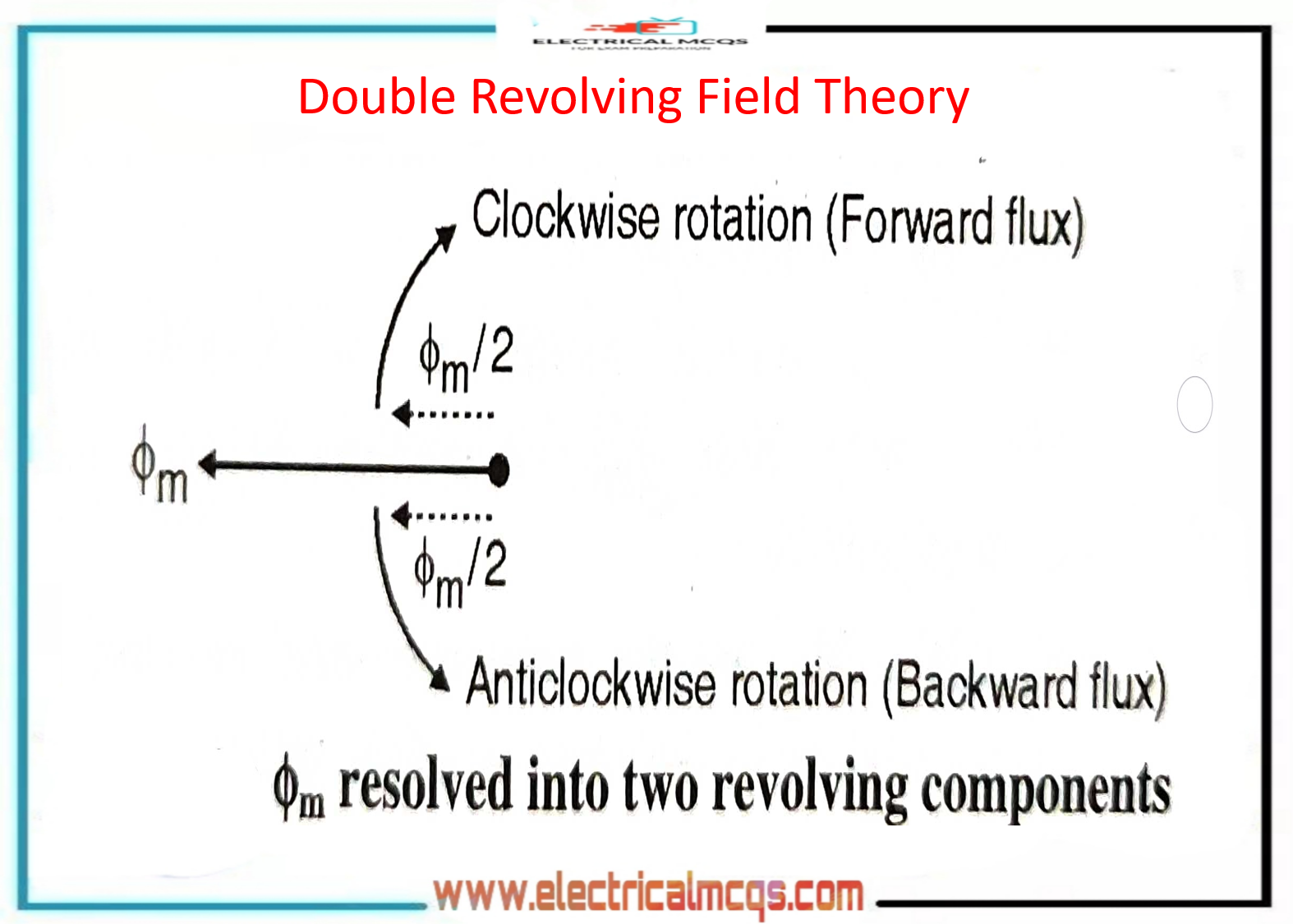Construction of Single Phase Induction Motors :
 |
The stator winding is connected across a single-phase ac supply. The ac supply produces a rotating magnetic field in the air gap between the stator and rotor.
The field rotates at a speed called synchronous speed and it is denoted by Ns. It is mathematically expressed as,
Ns = 120 f / P R.P.M.
The induction motor actually rotates at a speed that is slightly less than the synchronous speed.
The rotor is said to be of squirrel cage type. As the construction of rotor appears to be like the squirrel's cage, the name squirrel cage rotor has been used.
As shown in Fig., the rotor consists of copper or aluminium bars which are permanently short-circuited at both the ends using the conducting rings called end rings.
Principle of operation :
A single-phase ac supply is connected to the stator winding. This forces an alternating current through the stator winding.
This current produces an alternating flux in the air gap between the stator and motor. The alternating flux passes over the rotor conductors and induces an emf into it due to the transformer action.
Due to this induced voltage, a current starts flowing through the rotor conductors. This current will then produce its own flux called as the rotor flux. The main flux produced by the stator winding interacts with the rotor flux to produce the torque.
The rotor flux gets produced due to the principle of induction hence the name of the motor is induction motor.
This important to note that the single-phase induction motor are not self-starting, like the dc motors
Double Revolving Field Theory:
In order to make the induction motor self-starting, it is necessary to produce a rotating magnetic field.
And in order to do so, there should be at least two magnetic fields that satisfy the following conditions:
1. The two magnetic fluxes should be shifted by 90° with respect to each other in space i.e. if one flux is horizontal then the other one should be vertical.
2. Also, the two magnetic fluxes should be in time quadrature. If the fluxes are represented by phasors, the phasors must be at 90° with respect to each other.
3. A single-phase stator winding can not satisfy these two conditions because a single winding can produce only one flux. Hence some modifications are required to be done.
Principle :
The double-revolving field theory states that any alternating quantity can be resolved into components that rotate in the opposite directions to each other with each one having a magnitude that is half of the peak magnitude of the alternating quantity.
Let us apply this theory to single-phase induction motors. Assume that the stator winding produces an alternating flux with the peak value of say Φm.
Then as per the revolving field theory, we can resolve this flux into two revolving flux components.
One of them will rotate in the clockwise direction and the other one will rotate in the anticlockwise direction. Both these components are of magnitude Φm / 2 as shown in fig.
The resultant of these two components will be the resultant stator flux, at any given instant of time, and the continuous rotation of the two components will result in the original stator flux
Both the revolving flux components will cut the armature conductors and induces emf in them. The rotor currents induced due to these components will circulate in the rotor in opposite directions to each other.
Hence rotor flux corresponding to both the revolving components will be produced. The torque produced due to the interaction of main flux with these two flux components will be in opposite directions to each other.
Hence the net torque exerted on the rotor will be zero at the time of starting the motor. Therefore the single-phase ac motors are not self-starting motors.
Torque Speed Characteristics of Single Phase Induction Motor:
The torque-speed characteristics of a single-phase induction motor is shown in Fig. It shows that the torques produced by the two oppositely rotating flux components are exactly opposite to each other.
Fig. shows that the resultant torque is equal to zero at N = 0 i.e. at the time of starting. Hence the induction motor is not self-starting,But if we rotate the rotor in any direction by some external means then the motor will start rotating in that direction.
But practically it is not possible to rotate the motor by giving the initial thrust therefore it is necessary to modify the construction of the single-phase induction motors, in order to make them self-starting.





